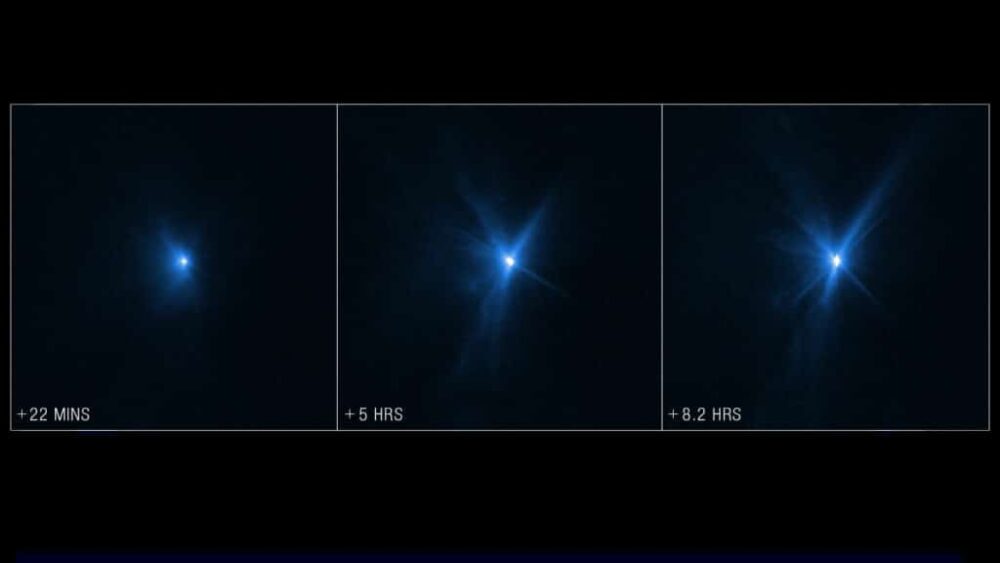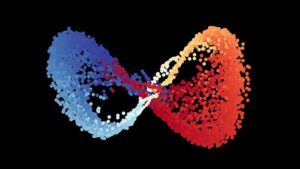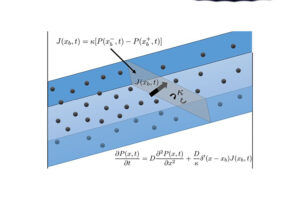After ten months of flying in space, NASA’s Double Asteroid Redirection Test (DART) successfully impacted the asteroid Dimorphos on Sept. 26, 2022, at 7:14 pm EDT. was the world’s first test of the kinetic impact mitigation technique, using a spacecraft to deflect an asteroid that poses no threat to Earth, and modifying the object’s orbit.
NASA’s telescopes- the James Webb Space Telescope and the Hubble Space Telescope– took this opportunity to amaze space enthusiasts. The telescopes captured detailed views of the DART impact, designed to intentionally smash a spacecraft into a small asteroid in the world’s first-ever in-space test for planetary defense. This is the first time Webb and Hubble simultaneously observed the same celestial target.
Together, the Hubble and Webb observatories can answer critical scientific questions about the structure and evolution of our solar system. The synchronized Hubble and Webb observations are more than merely a technical achievement for each telescope.
NASA Administrator Bill Nelson said, “Webb and Hubble show what we’ve always known to be true at NASA: We learn more when we work together. For the first time, Webb and Hubble have captured imagery from the same target in the cosmos: an asteroid that was impacted by a spacecraft after a seven-million-mile journey. All of humanity eagerly awaits the discoveries from Webb, Hubble, and our ground-based telescopes – about the DART mission and beyond.”
Both telescopes have captured the impact in different wavelengths of light – Webb in infrared and Hubble in visible will reveal the distribution of particle sizes in the expanding dust cloud, helping to determine whether it threw off lots of big chunks or mostly fine dust.
The characteristics of Dimorphos’ surface, the amount of material ejected by the collision, and the speed at which it was ejected will all be revealed by observations from Webb and Hubble. Combining this information with ground-based telescope observations will help scientists to understand how effectively a kinetic impact can modify an asteroid’s orbit.
Webb’s observations:
Before the collision, Webb made one observation of the impact location. Then, over the course of the following few hours, it created additional observations. A tight, compact core is visible in images from Webb’s Near-Infrared Camera (NIRCam), with material plumes appearing as wisps streaming away from the impact site.
Credits: Science: NASA, ESA, CSA, Cristina Thomas (Northern Arizona University), Ian Wong (NASA-GSFC); Joseph DePasquale (STScI)
Observing the impact with Webb presented the flight operations, planning, and science teams with unique challenges, because of the asteroid’s speed of travel across the sky. As DART approached its target, the teams performed additional work in the weeks leading up to the impact to enable and test a method of tracking asteroids moving over three times faster than the original speed limit set for Webb.
Principal investigator Cristina Thomas of Northern Arizona University in Flagstaff, Arizona, said, “I have nothing but tremendous admiration for the Webb Mission Operations folks that made this a reality. We have been planning these observations for years, then in detail for weeks, and I’m tremendously happy this has come to fruition.”
Hubble’s observations:
Additionally, Hubble recorded observations of the binary system 15 minutes before DART collided with Dimorphos’ surface and again 15 minutes thereafter. Hubble’s Wide Field Camera 3 captured images that demonstrate the impact in visible light. Ejections from the impact are visible as beams extending from the asteroid’s body. The more prominent, widely spaced-out spike of ejecta to the left of the asteroid is in the vague direction of the approach of DART.

Credits: Science: NASA, ESA, Jian-Yang Li (PSI); image processing: Alyssa Pagan (STScI)
Some of the rays appear slightly curved, but astronomers must look closer to determine what this could mean. In the Hubble images, astronomers estimate that the system’s brightness increased three times after impact and saw that brightness hold steady, even eight hours after impact.
Hubble captured 45 images in the time immediately before and following DART’s impact with Dimorphous. Hubble plans to monitor the Didymos-Dimorphos system 10 more times over the next three weeks. These regular, relatively long-term observations as the ejecta cloud expand and fade over time will paint a complete picture of the cloud’s expansion from the ejection to its disappearance.
Credits: Science: NASA, ESA, Jian-Yang Li (PSI); animation: Alyssa Pagan (STScI)
Jian-Yang Li of the Planetary Science Institute in Tucson, Arizona, who led the Hubble observations, said, “When I saw the data, I was speechless, stunned by the amazing detail of the ejecta that Hubble captured. I feel lucky to witness this moment and be part of the team that made this happen.”













